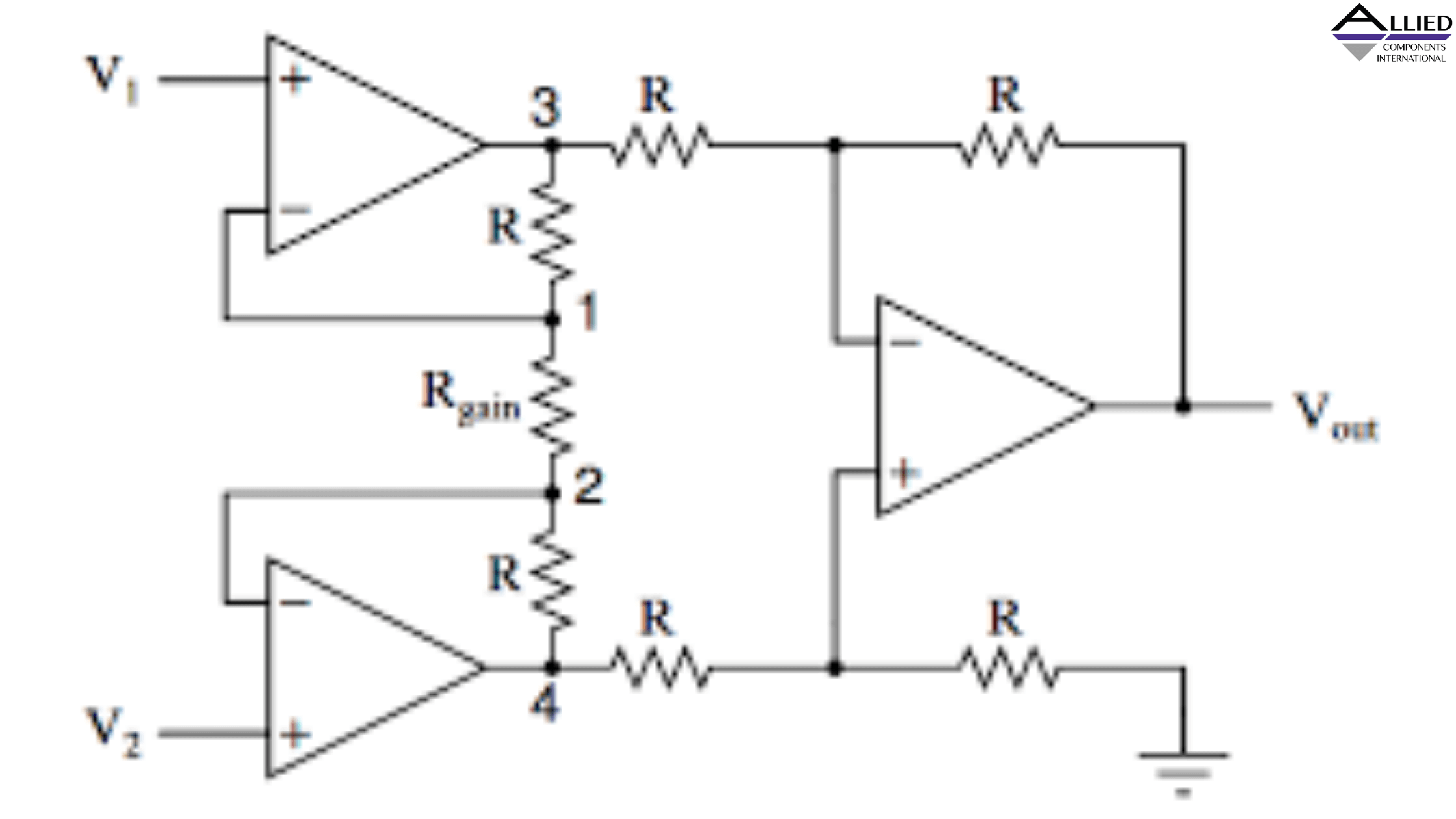Why Instrumentation Amplifiers Require High Common-Mode Rejection Levels

Instrumentation amplifiers, or in-amps, are used in industrial and consumer applications requiring the measurement and control of physical parameters. A look at a bridge measurement system will help understand the importance of an in-amp having a high common-mode rejection (CMR) level when extracting a small differential signal.
Measuring Bridge Output in an In-Amp Application
In a bridge measurement system for typical in-amp use, a voltage difference is noted between the nodes. The bridge voltage difference, usually in the 0-20 mV range, is then amplified to typically 0-5 V. While multiple parameters matter, CMR and input impedance are the most important here.
Bridge Output Comprises Common-Mode and Differential Signals
Differential and common-mode signals constitute the signal coming into the amplifier. In an ideal circuit, an amplified version of the differential signal would be the output. However, the output voltage may also comprise the input common-mode signal in reality.
Reasons to Suppress the In-Amp Common-Mode Signal
As there are numerous factors affecting common-mode voltage, you may expect variations in the output voltage error. For starters, any common-mode noise at the two nodes will impact the common-mode signal. Bridge resistors may also affect common-mode voltage. To limit the potential output error, you’ll need to simultaneously amplify the differential signal and suppress the common-mode input.
An In-Amp’s Common-Mode Rejection
When it comes to an in-amp, the common mode rejection ratio (CMRR) tells you about the device's ability to suppress or decline commode mode signals. To determine the CMRR, divide the differential gain by the common mode gain. A high CMRR amp design helps to minimize the error from the common-mode voltage.
Is the CMRR of a Simple Op-Amp Amplifier High Enough?
Op-amps amplify differential signals and suppress the common-mode element of the input. As such, it may appear that a simple inverting or non-inverting op-amp is suitable for extracting the small differential voltage coming from the bridge circuit.
However, tests show op-amps have significantly lower capabilities to reject common-mode signals. Their low CMRR makes the devices unsuitable for many applications.
Does a Difference Amplifier Offer a High CMRR?
It’s possible to design a difference amplifier with a very high CMRR if you can attain a high matching between resistors on the IC. However, this type of amplifier is limited in a few ways, such as the low and unequal input terminals impedances. The varying loads on the bridge circuit may impact the common-mode voltage, causing an output signal error.
When building an in-amp amplifier to effectively extract a small differential signal, your design should incorporate a high CMR level and high input impendence. To learn more about high-quality electrical components for industrial and consumer applications, visit our Allied Components International website. We build superior-performance custom components, including inductors, circuit protection devices, and transformers.


